
Inspiring Young People
What does it take to get today's young people excited about environmental conservation? I believe that hands-on work in a natural or outdoor setting gives them real-world experiences that boost their interest and enthusiasm of the natural world. Young people who are having a hard time passing school because of unfavorable home or life situations can especially benefit from this style of structured learning experience. Extracurricular work can do more than just inspire youth to care about the environment; it can also combat depression, build self esteem, and provide professional job skills. Having work experience in high school also decreases the risk of future unemployment (Matsuba, Elder, Petrucci, and Marleau 15-26) (Fabian 130-138).
I have gained new insight into how young people become interested in science and the environment by engaging young adults ages fifteen to twenty in hands-on environmental work through the Youth Conservation Corps (YCC) in Newport, Oregon. Programs like YCC can foster an increase in participants' feelings of emotional and physical connection with their surroundings and the natural world (Louie-Badua and Wolf, p.91). Crew members go through their personal journeys of discovery in which they push their own personal boundaries and learn new things about their surroundings. For example, one day, we heard a cougar growl at us in the forest. This was a rare and special moment that made them all feel a little afraid, but it was exciting at the same time. On another day, we cleared a quarter-mile of trail on a very steep incline. We later hiked down the trail, and everybody expressed their appreciation for the results of our hard work and the feeling of space we had created while hiking down the trail. I like to think that they remember moments like that for the rest of their lives, and that such moments will inspire them to continue working on environmental projects.
The Youth Conservation Corps Program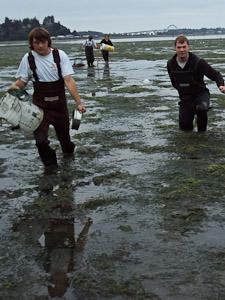
Youth Conservation Crew work in each location varies greatly and is based on local needs. In Lincoln County, Oregon, the work is largely focused on the watershed and local estuaries. A crew might survey a stream for trash one day and clear away brush the next day to allow saplings to grow into healthy trees. The focus in our area is on the entire watershed, which includes all rivers, streams, and estuaries (where the river meets the ocean), from their sources to the ocean. Watersheds cover a large area, and the program in Newport provides a diversity of tasks for each crew to complete over the course of the summer. These varied tasks reinforce the idea that the natural world is a complex place. Diversification also teaches them about different environmental ecosystems, which is important for effective environmental conservation work. Young adults in the program gain an understanding of the important factors that create healthy salmon runs and clean drinking water. They hike along streams and measure beaver dams, use kayaks to pick up trash, research mud shrimp in the mudflats, and assist with research projects on salmon smolt in the surf zones along the coast. These types of lessons prepare them for future employment opportunities in environmental conservation.
On the Mudflats
Newport is a coastal town where the natural environment is an important part of daily life. The well-being of the town and surrounding area depends on the rapidly declining fishing industry. My crew has been engaged in a mud shrimp research project in Yaquina Bay, the local estuary. My father, John Chapman, is the main biologist that directs the crew in this project. The young adults in this crew are encouraged to get muddy, think about science, and do physically exhausting work. Over the past three summers, more than twenty young adults have assisted scientific research on the large Yaquina mudflats, where the mud shrimp dig burrows and feed by siphoning water through the burrow.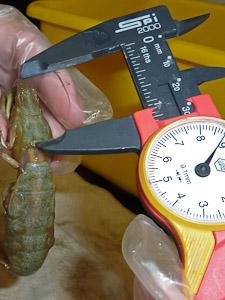
One of the main tasks required for this project is mapping the shrimp populations using GPS units and sampling equipment. The crew members are picked up early in the morning to get out on the mudflat during the low tide. We spend at least four hours, sometimes more, digging up mud shrimp and recording GPS locations of each shrimp. The shrimp are sampled using a core with a set volume to determine population density. The core is a metal tube that sucks up mud and shrimp like a straw when submersed in water, with one end plugged, and then pulled from the water. The crew looks through each of the mud samples and counts how many shrimp were in that volume of mud.
This process requires careful labeling and bagging of shrimp so that the number of shrimp found per core can be recorded. Following the morning sampling, the crew heads back to the lab to study the shrimp more closely. Crewmembers use calipers to measure each shrimp's carapace length, identify the sex of the shrimp using a microscope, and check for parasites on every shrimp collected and record all of this data on a spreadsheet. This is tedious work and must be done with accuracy so that the results can be used to further analyze the populations of the mud shrimp. The data that the crew produces has become a substantial resource for John and other researchers who work on the project, and our work has been cited in various publications. Eventually, John hopes to culture the shrimp in aquariums to protect individuals and breed more shrimp. The parasite that kills the mud shrimp cannot live without its host, so after it kills the remaining shrimp in the mudflat, it would then die off. The mud shrimp could then be introduced back into the mud flat. This type of project requires a great deal of paperwork and funding through a variety of non-governmental, governmental, and educational sources. Despite our efforts, we have not been able to move forward with the shrimp breeding and reintroduction due to lack of funding. In the meantime, the YCC members continue to provide crucial manpower on the research side of the program.
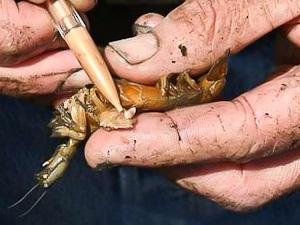
The lab portion of the program allows crewmembers to participate as more than just manual laborers. They measure and record data like real scientists and learn about the new discoveries that result from their data. It can be difficult for young adults to sit and measure shrimp for hours at a time, but the process of recording the data they collect in the field has made the crew extremely valuable to researchers. Every summer, crews are required to take increasingly complex measurements, and we have found that using an assembly line method for recording data, with each crew member acting as an expert on a single task, helps the process move swiftly. One crewmember looks through the microscope to find the tiny reproductive organs of the shrimp to determine the sex. The next crewmember checks for parasites and passes the shrimp to be measured. All of the data is recorded by the last crewmember in the line. Each summer, around 1,500 shrimp are collected and measured. This provides researchers a large sample set for data analysis, and the crew learns a great deal about the shrimp populations.
Part of the program gives crew members two or three opportunities each summer to present the scientific nature of the projects that they complete. Preparing a presentation is a useful skill for the crewmembers and teaches them how to conduct themselves professionally. Crew members are always excited to present their work to an audience, and they respond with pride when asked questions about their project. Succeeding at tasks such as completing a research project or presenting information to experts gives them a confidence boost that they may not experience in the challenges they face at home or in school. This program has benefited greatly from putting the spotlight on these young adults and demonstrating that young adults, given the opportunity, contribute meaningfully to society rather than get into trouble. YCC has become an example for young adults participating in science and environmental conservation.
Other Projects
The mud shrimp research is just one component of the work the crew completed over the past summer. We spent the other half of the summer clearing trails for a park that was scheduled to be built nearby. The park, Beaver Creek, consists of large hills and meadows overlooking a wetland area. The views from atop the hills are breath-taking. Crewmembers welcomed the break from the drudgery and muddiness of the mud flat and the opportunity to learn some new skills. Trail clearing teaches crewmembers about working with machetes, weed-eaters, rakes, shovels and other landscaping equipment. They also learn about how to remove invasive plants like the Himalayan blackberry, Scotch broom, policeman's helmet, and tansy ragwort. They also meet park rangers and make connections that could lead to future jobs with the state park. Another beneficial aspect of working on the parkland is the chance to experience and learn about the forest, something that many of them never had the opportunity to enjoy.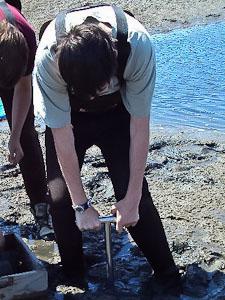
Success Stories
As a crew leader, I have witnessed a number of crew members grow from troubled kids into engaged young adults with the very real potential to contribute meaningfully to society. These are a few crew members whose stories and experiences are especially noteworthy.
Jacob:
Jacob came from a very rough part of Boulder, Colorado, where he became a drug dealer at age twelve - he was affiliated with local gangs, and drugs were a way of gaining financial stability. He later began using drugs, but kicked the habit after periods of incarceration. His family moved from Boulder to Toledo, Oregon, where they opened up a hotel. The hotel became an attractive place for drug addicts to stay the night and use. His family eventually decided to leave when Jacob was sixteen, and when he refused to go, they left him there. Instead, he moved in with a woman who lived in the community with her son, which is where he lived while he worked with YCC. Although he had a place to stay, he struggled with hunger that resulted from his unstable living situation and difficulty acquiring food stamps. I met Jacob in the summer of 2008, when he was assigned to work on my crew in Newport. Jacob enjoyed working hard and never had a problem doing what was asked of him. I didn't figure out that he was hungry until he became very unruly and angry on the job over a period of a couple of weeks. One day, Jacob got so angry that he stormed away from the other crew members and out of sight. I gave him a few minutes to cool down and then went to talk with him. I found him hacking blackberries with a machete. After a couple of minutes he said, "I'm just going to jail like the rest of my family and I'm going to do nothing with my life." The conflict eventually cooled down, but that interaction made me realize that Jacob lived with a daily worry that he would eventually head down the same path as many of his family members.
Young adults often worry that they will end up like other family members, but Jacob was able to escape the cycle of poverty and crime that had put others in jail. He finished the summer working on my crew and then returned to high school and graduated the next year. The following summer, he re-applied for the same YCC program and was hired with a different project instructor. Jacob quit the program halfway through the summer and was hired by another youth employment agency in town, where was getting excellent reviews on his work. Almost a year later, Jacob emailed to tell me that he was doing well; he had a job and a roof over his head, and was considering going to college for writing. Until that letter, I hadn't realized the impact that a program like YCC can have on the future of someone like Jacob. I don't know whether Jacob ended up going to college, but the fact that he even considered it was evidence of the confidence boost and personal growth that YCC programs aim to provide.
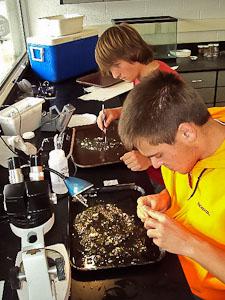
I worked with Eddie for two summers in a row. He had a good heart, displayed a high level of intelligence, and always cared about others. Eddie also had anger problems. By the time I met Eddie, he had been expelled from seven different schools for fighting. After two summers of working with YCC, Eddie had learned so much about the various projects that he became a kind of example for the program. He joined me, other program supervisors, and another crew member to present at a youth employment conference in Chicago in December 2009. Eddie did a fabulous job presenting, and we all enjoyed sightseeing around Chicago after the conference. The last time I spoke with Eddie, he was applying for grant and scholarship money to attend college with the hope of becoming a pediatrician. As a result of the lessons learned through his YCC involvement, Eddie made future goals for himself that were academically challenging and would provide a solid future for himself.
Tanner:
Tanner was a somewhat shy individual when he first started working for the crews, but was really smart, always did a good job, and often assisted in leading other crew members and maintaining control of the crew. He was always a dedicated learner and became very knowledgeable about the project. As a reward for his hard work and presentation skills, he accompanied me and Eddie to Chicago to present at the conference. Tanner's parents seemed like supportive, responsible people who went out of their way to help him acquire the paperwork he needed in order to board an airplane. The experience of working on the crew and taking ownership of his presentation gave Tanner a confidence boost that will serve him well in the future. His personal growth exemplifies the impact of the YCC program.
William:
William was always a leader on the team. He motivated other team members and performed data recording that was essential to our group's project. Every summer, the project becomes more involved in collecting various data. The task of data recoding was especially meticulous and difficult to perform, but William did the job well and made very few errors. The summer work required him to wake up at 5:00 or 6:00 am, but he was always on time. Despite his success on the crew, William was practically failing out of school and often skipped school altogether. Toward the end of the summer, he told me that he was going to try and motivate himself to go to school every day, since he was able to get up early for work. William's dedication to his summer job proved that he was capable of getting up and going to school as well. This small lesson may have made all the difference in his future by boosting his work ethic and his attention to detail.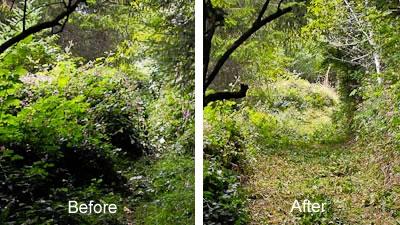
Final Thoughts
After working on these crews, it is difficult for me to imagine students learning about the environment in a classroom without the benefits of a hands-on learning experience like the crewmembers get in the YCC program. Many lessons can be taught in a classroom; however, at some point, one must have a physical context within which to develop an understanding of the natural environment. Books do not provide this physical context. "From the standpoint of the child, the great waste in school comes from his inability to utilize the experience he gets outside... while on the other hand, he is unable to apply in daily life what he is learning in school. That is the isolation of the school – its isolation from life" (John Dewey 1916). This outside experience Dewey referred to almost a century ago still rings true to our daily lives. The Youth Conservation Corps program is a great way of getting young adults excited about the environment and educating them about conservation efforts.
Photos are copyright protected and may not be reproduced without permission. Photos are used with the permission of Jack Chapman
References cited
Fabian, Ellen S. "Urban Youth With Disabilities: Factors Affecting Transition Employment." Rehabilitation Counselling Bulletin. 50.3 (2007): 130-138. Print.
Matsuba, M. Kyle, Gavin J. Elder, Franca Petrucci, and Tammy Marleau. "Employment Training for At-risk Youth: A Program Evaluation Focusing on Changes in Psychological Well-being." Child Youth Care Forum. 37. (2008): 15-26. Print.
Liane J. Louie-Badua and Maura Wolf (2008). The spiritual nature of service-learning. New directions for youth development.No. 118, 91-95.